-
 Bitcoin
Bitcoin $99,594.2189
-3.59% -
 Ethereum
Ethereum $2,188.5793
-9.00% -
 Tether USDt
Tether USDt $1.0001
-0.02% -
 XRP
XRP $1.9745
-5.82% -
 BNB
BNB $608.9511
-3.73% -
 Solana
Solana $130.4575
-5.93% -
 USDC
USDC $1.0000
0.01% -
 TRON
TRON $0.2637
-3.59% -
 Dogecoin
Dogecoin $0.1493
-5.97% -
 Cardano
Cardano $0.5322
-6.72% -
 Hyperliquid
Hyperliquid $33.9044
3.33% -
 Bitcoin Cash
Bitcoin Cash $449.6411
-5.46% -
 UNUS SED LEO
UNUS SED LEO $8.9629
0.43% -
 Sui
Sui $2.3943
-8.35% -
 Chainlink
Chainlink $11.4402
-7.83% -
 Stellar
Stellar $0.2241
-6.49% -
 Avalanche
Avalanche $16.1489
-4.24% -
 Toncoin
Toncoin $2.7182
-5.94% -
 Shiba Inu
Shiba Inu $0.0...01040
-5.72% -
 Litecoin
Litecoin $78.7882
-4.07% -
 Ethena USDe
Ethena USDe $1.0004
-0.01% -
 Hedera
Hedera $0.1305
-7.45% -
 Monero
Monero $297.0030
-5.32% -
 Dai
Dai $0.9997
-0.02% -
 Polkadot
Polkadot $3.1834
-6.03% -
 Bitget Token
Bitget Token $3.9788
-7.03% -
 Uniswap
Uniswap $6.1327
-10.62% -
 Pepe
Pepe $0.0...08689
-8.30% -
 Pi
Pi $0.4826
-9.65% -
 Aave
Aave $219.8043
-9.69%
Is it meaningful for the MACD line to break through the zero axis? What is the role of the zero axis in a bull market?
In a bull market, the MACD line breaking above the zero axis confirms bullish strength, signaling potential entry points for long positions.
May 24, 2025 at 10:21 am
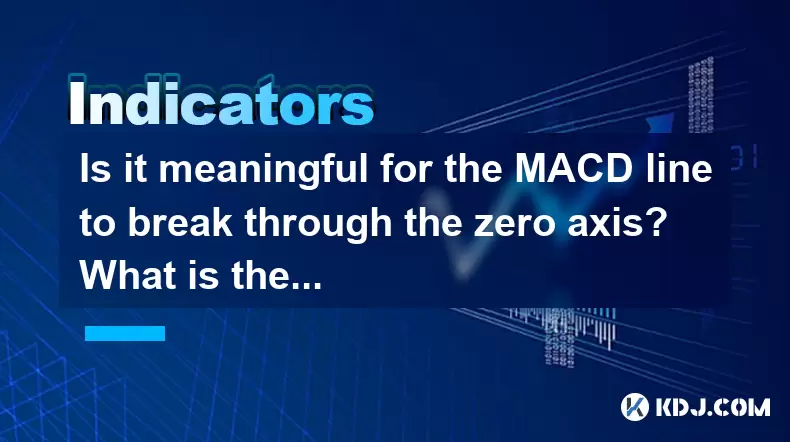
The Moving Average Convergence Divergence (MACD) is a widely used momentum indicator in the cryptocurrency trading community. It helps traders identify potential trend changes and momentum shifts in the price of various digital assets. One crucial aspect of the MACD indicator is its zero axis, which plays a significant role in interpreting market conditions. In this article, we will explore whether it is meaningful for the MACD line to break through the zero axis and discuss the role of the zero axis in a bull market.
Understanding the MACD Indicator
The MACD indicator consists of two lines: the MACD line and the signal line. The MACD line is calculated by subtracting the 26-period Exponential Moving Average (EMA) from the 12-period EMA. The signal line, on the other hand, is a 9-period EMA of the MACD line. The interaction between these two lines and the zero axis provides valuable insights into market trends and potential trading opportunities.
The Significance of the Zero Axis
The zero axis, also known as the centerline, is a horizontal line that separates positive and negative values on the MACD indicator. It represents the point where the short-term moving average (12-period EMA) and the long-term moving average (26-period EMA) are equal. When the MACD line crosses the zero axis, it indicates a shift in momentum and can signal potential trend changes.
MACD Line Breaking Through the Zero Axis
When the MACD line breaks through the zero axis, it is considered a significant event by many traders. A break above the zero axis suggests that the short-term moving average has crossed above the long-term moving average, indicating a potential shift from a bearish to a bullish trend. Conversely, a break below the zero axis implies that the short-term moving average has crossed below the long-term moving average, signaling a potential shift from a bullish to a bearish trend.
The meaning of the MACD line breaking through the zero axis can vary depending on the overall market context. In a bullish market, a break above the zero axis can confirm the strength of the uptrend and provide traders with an opportunity to enter long positions or add to existing ones. On the other hand, in a bearish market, a break below the zero axis can reinforce the downtrend and signal potential selling opportunities.
The Role of the Zero Axis in a Bull Market
In a bull market, the zero axis plays a crucial role in confirming the strength and sustainability of the uptrend. When the MACD line remains consistently above the zero axis during a bull market, it indicates that the short-term moving average is consistently higher than the long-term moving average. This suggests that the bullish momentum is strong and that the uptrend is likely to continue.
Traders often look for the MACD line to retest the zero axis from above during a bull market. A successful retest, where the MACD line briefly dips towards the zero axis but fails to cross below it, can be seen as a sign of bullish strength. It suggests that the bulls are in control and that the uptrend is likely to persist.
Moreover, the distance between the MACD line and the zero axis can provide additional insights into the strength of the bull market. A wider gap between the MACD line and the zero axis indicates stronger bullish momentum, while a narrowing gap may suggest that the uptrend is losing steam.
Using the Zero Axis for Trading Decisions
Traders can incorporate the zero axis into their trading strategies to make more informed decisions. Here are some ways to use the zero axis in a bull market:
- Entering long positions: When the MACD line breaks above the zero axis during a bull market, traders may consider entering long positions or adding to existing ones. This break can confirm the strength of the uptrend and provide a potential entry point.
- Confirming bullish trends: If the MACD line remains consistently above the zero axis during a bull market, it can serve as a confirmation of the bullish trend. Traders can use this information to maintain their long positions and potentially add to them as the uptrend continues.
- Identifying potential pullbacks: When the MACD line approaches the zero axis from above during a bull market, it may signal a potential pullback or consolidation. Traders can use this information to adjust their positions or prepare for a possible buying opportunity if the MACD line successfully retests the zero axis without crossing below it.
- Setting stop-loss levels: The zero axis can also be used to set stop-loss levels. If a trader enters a long position when the MACD line breaks above the zero axis, they may consider placing their stop-loss order below the zero axis to protect against a potential trend reversal.
Limitations and Considerations
While the zero axis can provide valuable insights into market trends and momentum, it is essential to consider its limitations and use it in conjunction with other technical indicators and analysis techniques. The MACD indicator, including the zero axis, is a lagging indicator, meaning it may not always provide timely signals. Therefore, traders should not rely solely on the zero axis and should incorporate other factors into their decision-making process.
Additionally, false signals can occur, especially in volatile markets. A break above or below the zero axis may not always lead to a sustained trend change. Traders should use proper risk management techniques and consider the overall market context when interpreting MACD signals.
Frequently Asked Questions
Q: Can the zero axis be used in other technical indicators besides the MACD?
A: While the zero axis is most commonly associated with the MACD indicator, it can be applied to other technical indicators that involve the comparison of moving averages or momentum. For example, some traders use the zero axis in the Relative Strength Index (RSI) to identify potential overbought or oversold conditions. However, the interpretation and significance of the zero axis may differ depending on the specific indicator and market conditions.
Q: How can I combine the zero axis with other technical indicators for better trading decisions?
A: To improve trading decisions, traders can combine the zero axis with other technical indicators such as trend lines, support and resistance levels, and volume analysis. For instance, if the MACD line breaks above the zero axis and coincides with a breakout above a key resistance level, it may provide a stronger bullish signal. Additionally, confirming the MACD signal with high trading volume can increase the reliability of the potential trend change.
Q: Are there any specific timeframes that work best for analyzing the zero axis in the MACD indicator?
A: The effectiveness of the zero axis in the MACD indicator can vary depending on the timeframe being analyzed. Shorter timeframes, such as 15-minute or 1-hour charts, may generate more frequent signals but can also be more prone to false signals and market noise. Longer timeframes, such as daily or weekly charts, tend to provide more reliable signals but may result in fewer trading opportunities. Traders should experiment with different timeframes and align them with their trading style and objectives to find the most suitable approach for analyzing the zero axis in the MACD indicator.
Disclaimer:info@kdj.com
The information provided is not trading advice. kdj.com does not assume any responsibility for any investments made based on the information provided in this article. Cryptocurrencies are highly volatile and it is highly recommended that you invest with caution after thorough research!
If you believe that the content used on this website infringes your copyright, please contact us immediately (info@kdj.com) and we will delete it promptly.
- Altcoins Under Pressure: Cardano and XRP Face Critical Tests
- 2025-06-23 12:25:12
- Rare Coin Fever in Wiltshire: Auctions, Errors, and Olympic Gold!
- 2025-06-23 12:25:12
- XRP Price Under Pressure: War Fears and Market Sentiment
- 2025-06-23 12:30:12
- HAI Token Private Key Leak: What Happened and How to Stay Safe
- 2025-06-23 12:45:12
- Texas Goes All In: Bitcoin Reserve Signals Big State Embrace
- 2025-06-23 12:45:12
- Pi Network's Price Plunge: Crash, Scammer Accusations, and What's Next?
- 2025-06-23 13:05:12
Related knowledge
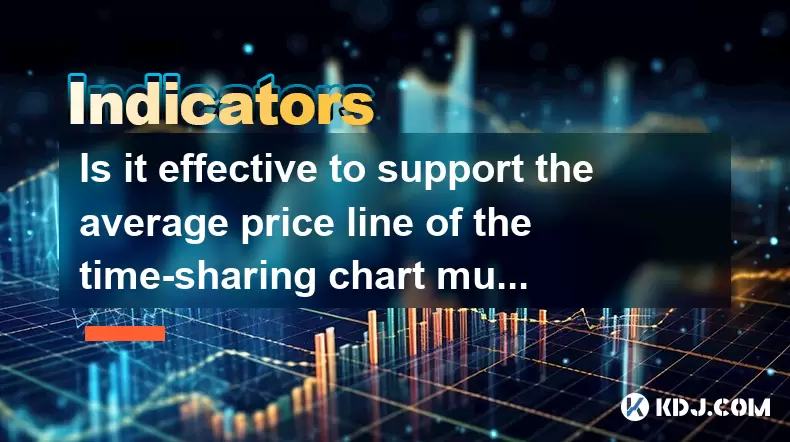
Is it effective to support the average price line of the time-sharing chart multiple times?
Jun 23,2025 at 01:36pm
Understanding the Average Price Line in Time-Sharing ChartsIn cryptocurrency trading, time-sharing charts refer to real-time price charts that display price movements over short intervals, often within a single trading day. Within these charts, the average price line, also known as the Volume Weighted Average Price (VWAP), is a commonly used technical i...
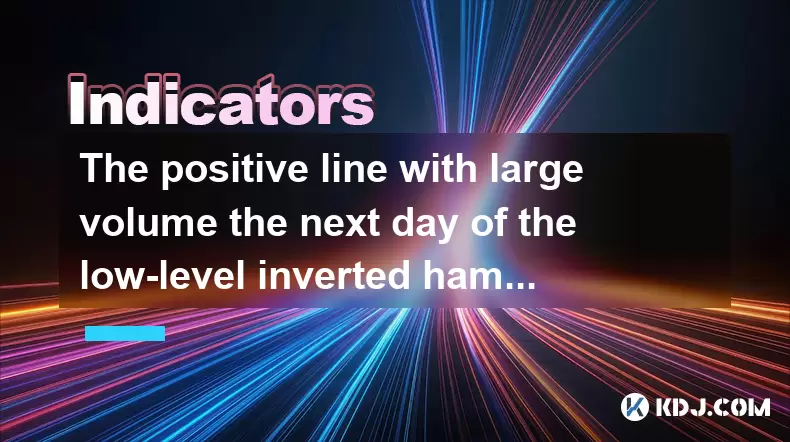
The positive line with large volume the next day of the low-level inverted hammer line confirms the reversal?
Jun 23,2025 at 01:21pm
Understanding the Low-Level Inverted Hammer LineThe inverted hammer line is a single candlestick pattern that typically appears at the end of a downtrend. It has a small real body near the bottom of the trading range and a long upper shadow, indicating that bulls attempted to push prices higher but were met with selling pressure. When this pattern forms...
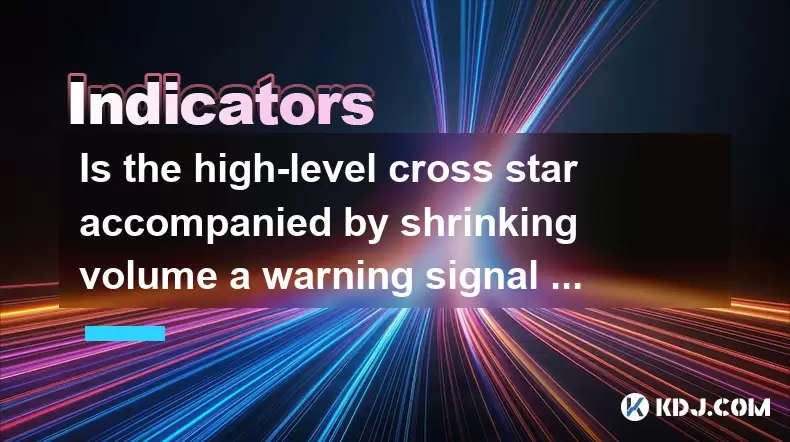
Is the high-level cross star accompanied by shrinking volume a warning signal of peaking?
Jun 23,2025 at 01:28pm
Understanding High-Level Cross Star PatternsIn the world of cryptocurrency trading, candlestick patterns are essential tools for technical analysis. One such pattern is the high-level cross star, which appears as a doji or near-doji candle at a significant resistance level. This pattern often indicates indecision in the market and can be interpreted as ...
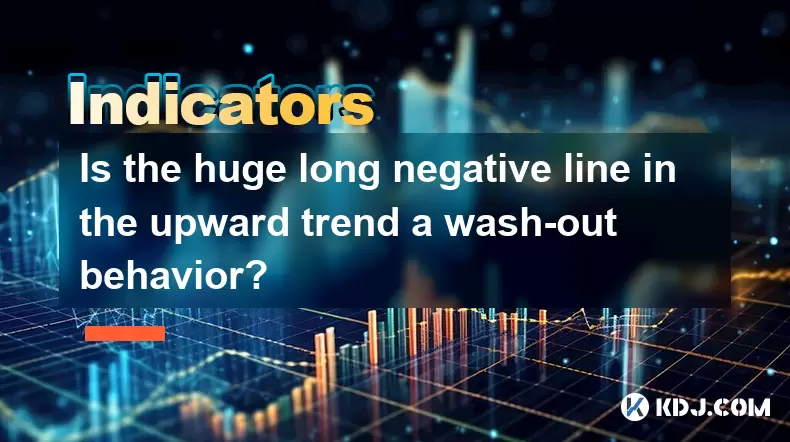
Is the huge long negative line in the upward trend a wash-out behavior?
Jun 23,2025 at 12:49pm
Understanding the Long Negative Candlestick in an Uprising TrendA long negative candlestick, often referred to as a long red or bearish candle, appearing during an upward trend can raise concerns among traders and investors. This pattern typically indicates a sudden and significant drop in price after a period of rising prices. It is often interpreted a...
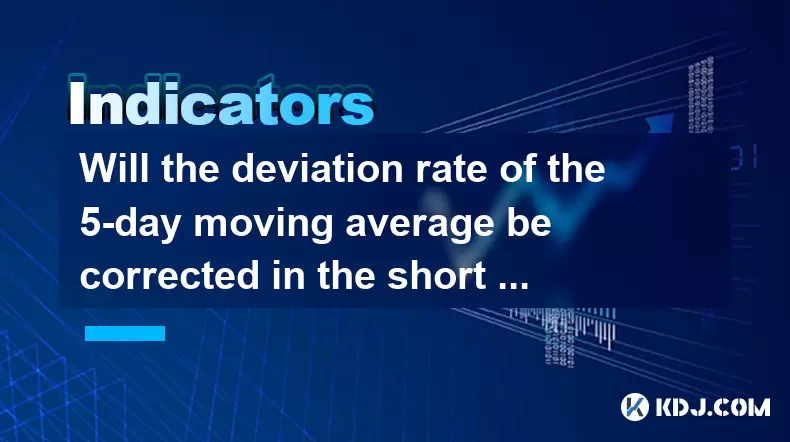
Will the deviation rate of the 5-day moving average be corrected in the short term if it is too large?
Jun 23,2025 at 02:07pm
Understanding the Deviation Rate of the 5-Day Moving AverageIn cryptocurrency trading, technical analysis plays a crucial role in evaluating price movements. One commonly used indicator is the 5-day moving average (MA), which calculates the average closing price over the past five days. The deviation rate refers to how far the current price or another m...

Can the EXPMA golden cross stand on the 5-day line at the same time?
Jun 23,2025 at 11:42am
Understanding the EXPMA Indicator in Cryptocurrency TradingThe Exponential Moving Average (EXPMA) is a popular technical analysis tool used by cryptocurrency traders to identify trends and potential reversal points. Unlike simple moving averages, the EXPMA gives more weight to recent price data, making it more responsive to current market conditions. In...

Is it effective to support the average price line of the time-sharing chart multiple times?
Jun 23,2025 at 01:36pm
Understanding the Average Price Line in Time-Sharing ChartsIn cryptocurrency trading, time-sharing charts refer to real-time price charts that display price movements over short intervals, often within a single trading day. Within these charts, the average price line, also known as the Volume Weighted Average Price (VWAP), is a commonly used technical i...

The positive line with large volume the next day of the low-level inverted hammer line confirms the reversal?
Jun 23,2025 at 01:21pm
Understanding the Low-Level Inverted Hammer LineThe inverted hammer line is a single candlestick pattern that typically appears at the end of a downtrend. It has a small real body near the bottom of the trading range and a long upper shadow, indicating that bulls attempted to push prices higher but were met with selling pressure. When this pattern forms...

Is the high-level cross star accompanied by shrinking volume a warning signal of peaking?
Jun 23,2025 at 01:28pm
Understanding High-Level Cross Star PatternsIn the world of cryptocurrency trading, candlestick patterns are essential tools for technical analysis. One such pattern is the high-level cross star, which appears as a doji or near-doji candle at a significant resistance level. This pattern often indicates indecision in the market and can be interpreted as ...

Is the huge long negative line in the upward trend a wash-out behavior?
Jun 23,2025 at 12:49pm
Understanding the Long Negative Candlestick in an Uprising TrendA long negative candlestick, often referred to as a long red or bearish candle, appearing during an upward trend can raise concerns among traders and investors. This pattern typically indicates a sudden and significant drop in price after a period of rising prices. It is often interpreted a...

Will the deviation rate of the 5-day moving average be corrected in the short term if it is too large?
Jun 23,2025 at 02:07pm
Understanding the Deviation Rate of the 5-Day Moving AverageIn cryptocurrency trading, technical analysis plays a crucial role in evaluating price movements. One commonly used indicator is the 5-day moving average (MA), which calculates the average closing price over the past five days. The deviation rate refers to how far the current price or another m...

Can the EXPMA golden cross stand on the 5-day line at the same time?
Jun 23,2025 at 11:42am
Understanding the EXPMA Indicator in Cryptocurrency TradingThe Exponential Moving Average (EXPMA) is a popular technical analysis tool used by cryptocurrency traders to identify trends and potential reversal points. Unlike simple moving averages, the EXPMA gives more weight to recent price data, making it more responsive to current market conditions. In...
See all articles

























































































